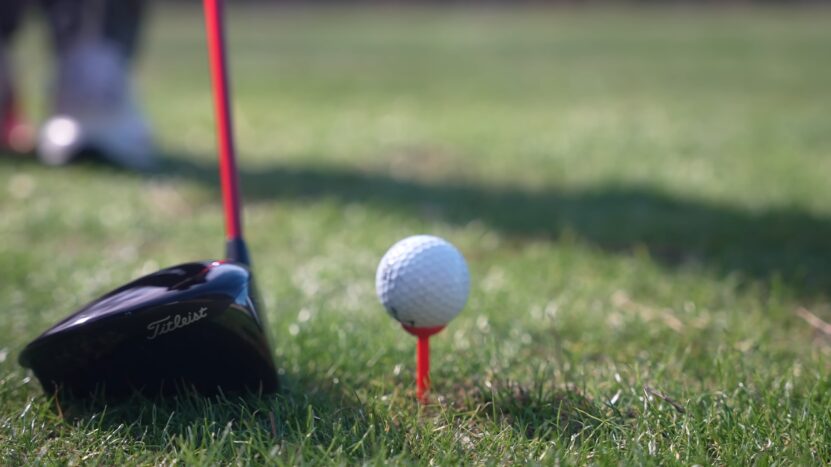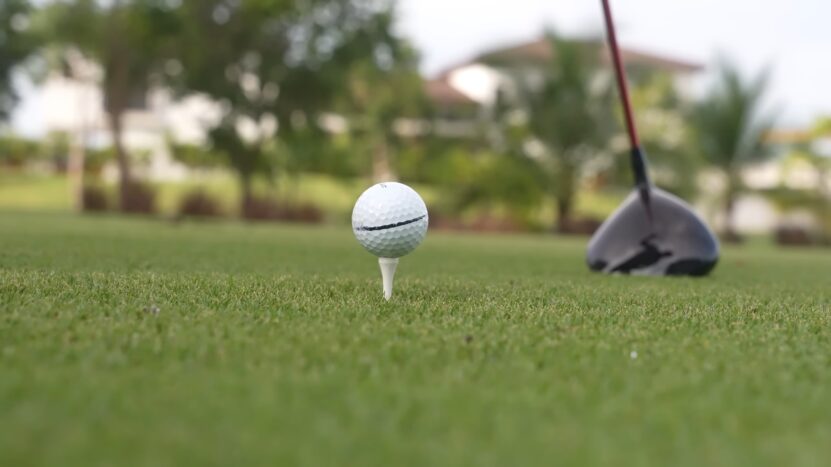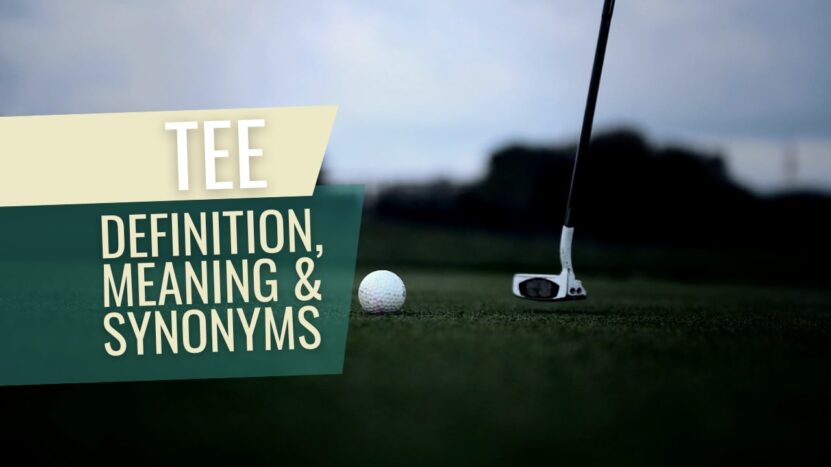Hello, golf aficionados, newbies, and the simply curious! In today’s post, we’re zeroing in on a seemingly small yet vital part of the golfing experience — the golf tee. From its humble beginnings to its indispensable role in the modern game, we’ll delve into every aspect of this essential golf accessory.
Golf Tee Explained

In the simplest terms, a golf tee is a stand used to support a stationary golf ball so the player can strike it, typically with a driver or other “woods.” It’s primarily used for the first stroke of each hole, termed the “tee shot.” The place from where you hit this shot is fittingly known as the “teeing ground” or “tee box.”
Golf tees are typically made of wood or plastic and are designed to be pushed into the ground. The top of the tee holds the golf ball steady, slightly elevated above the ground, providing an optimal position for the golfer to make their swing.
The History Behind It
The golf tee as we know it today has an intriguing history that may surprise you. The term “tee” initially referred to the mound of sand golfers manually built to serve as a launch pad for their golf balls. However, this process was laborious and inconsistent, leading to the invention of the modern golf tee.
In 1899, an American dentist named Dr. George Grant patented the first wooden golf tee. However, it wasn’t until the early 1920s that the Reddy Tee, invented by Dr. William Lowell, took the golfing world by storm. This was the first commercial golf tee, and its design closely resembled the tees we use today. Since then, the golf tee has undergone multiple iterations, optimizing for durability, functionality, and even environmental impact.
Why Is It So Important in Golf?
Though small, a tee plays a crucial role in golf for several reasons:
- Controlled Environment: The tee provides a controlled environment for the golfer to make their first stroke. The tee shot is the only shot in golf where the ball is stationary and in a perfect lie. This control can help with distance and accuracy.
- Maximizes Distance: With the ball elevated, golfers can hit the ball on the upswing. This action reduces the backspin and increases the ball’s launch angle, maximizing distance.
- Reduces Risk of Damage: By elevating the ball off the ground, the tee reduces the risk of damaging the club, especially modern drivers with their thin faces.
Types of Tees and How to Choose

There are several types of golf tees, each with their unique advantages. Let’s explore some of the most common ones:
- Wooden Tees: These are the traditional choice and most widely used. They’re affordable and come in various lengths to accommodate different club sizes and golfer preferences.
- Plastic Tees: Plastic tees are more durable than their wooden counterparts, meaning they’ll last longer. They’re also available in an array of colors and sizes.
- Brush Tees: These tees have bristles on top instead of a cup, designed to reduce friction and increase the ball’s distance.
- Anti-Slice Tees: These tees are angled to encourage a straighter flight path, aiding golfers struggling with a slice.
- Biodegradable Tees: As golf becomes more environmentally conscious, biodegradable tees made from materials like bamboo and cornstarch are gaining popularity.
Choosing the right tee depends on your individual needs and preferences. Experiment with different types and sizes to find what works best for you. For instance, if you frequently play with a driver with a large clubhead, longer tees would be more suitable. Conversely, if you’re using irons or fairway woods off the tee, a shorter tee would work better. If you’re struggling with a slice, an anti-slice tee could potentially help you. Remember, a well-selected tee can make a subtle yet important difference in your game.
How to Use a Golf Tee Correctly
Now that you understand what a tee is and its importance let’s discuss how to use it correctly.
- Positioning the Tee: The first step is to position the tee on the ground. Push the tee into the ground until the top of it is level with the grass. The exact height can vary based on the club you’re using and your personal preference. A good rule of thumb for using a driver is to ensure half the ball is above the top of the club when resting on the tee.
- Aligning the Ball: Align the ball with the inside heel of your front foot. This positioning allows you to hit the ball at the low point of your swing arc or slightly on the upswing, increasing the likelihood of an accurate shot.
- The Swing: When swinging, aim to hit the ball first, not the tee. A properly executed tee shot should leave the tee in the ground or barely disturbed.
Etiquette and Rules
Understanding golf tee etiquette and rules is essential, whether you’re a seasoned golfer or a beginner. Here are some key points to remember:
- Order of Play: The player with the lowest score on the previous hole is typically the first to tee off on the next hole, known as having the “honor.”
- Teeing Ground Rules: When teeing off, your ball must be within the teeing area, but you can stand outside it. The teeing area is a rectangle two club lengths in depth, defined by the outside limits of two tee markers.
- Penalties: If you accidentally knock the ball off the tee before your swing, there’s no penalty. However, if the ball is knocked off during your swing, it’s considered a stroke.
- Tee Care: Always pick up broken tees from the tee box and dispose of them properly to maintain the course’s cleanliness.
Final Words
The golf tee, small and unassuming, plays a pivotal role in the sport of golf. It sets the stage for each hole, contributing to the strategy, skill, and etiquette that golf embodies. Understanding its importance, how to choose one, and how to use it correctly can help enhance your game and deepen your appreciation for this timeless sport.
Whether you’re a seasoned professional, a hobbyist golfer, or a curious beginner, I hope this post has broadened your understanding and appreciation of the humble golf tee. As with everything in golf, practice and patience are key, and even the smallest detail can have a substantial impact on your game. So, on your next trip to the course, give a nod to your little golf tee – the unsung hero of every epic golf shot!
Remember, the journey of golf is not just about the destination (the 18th hole), but the path you tee off on.

